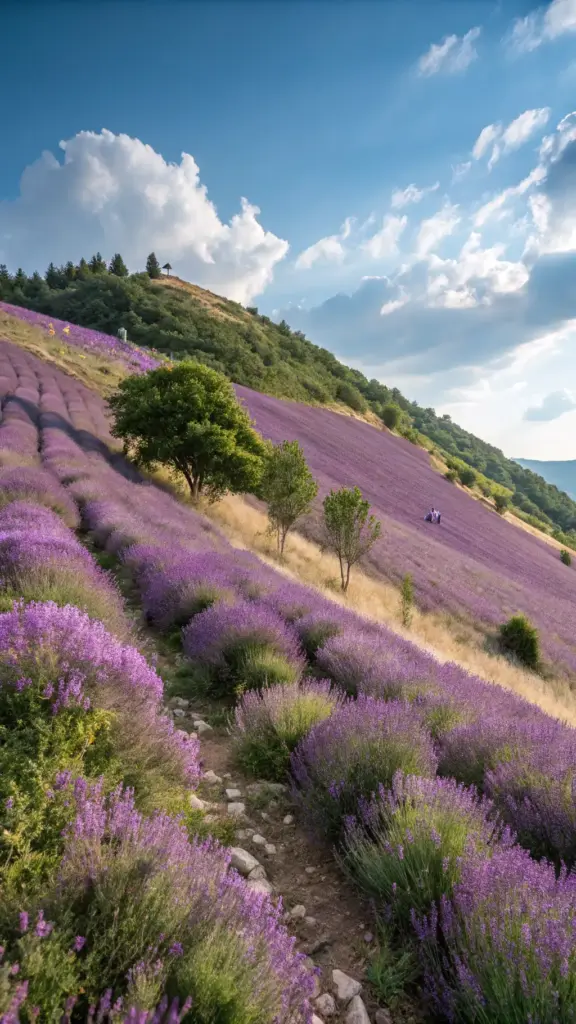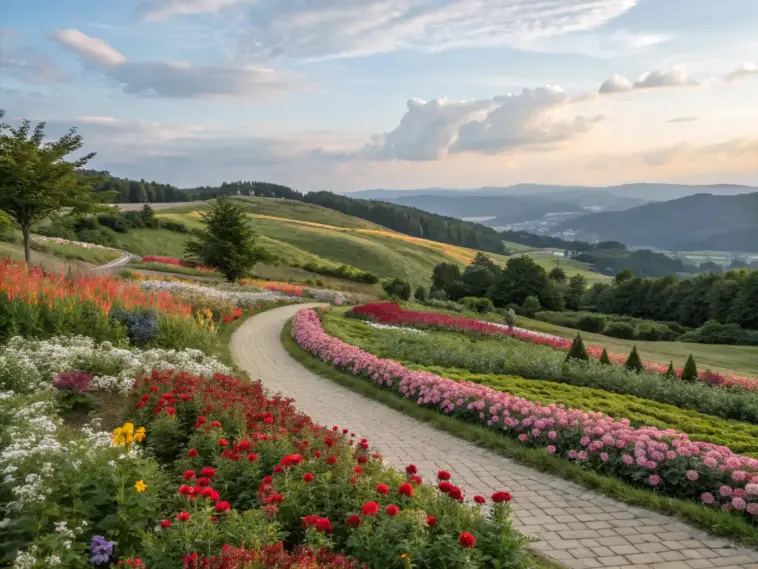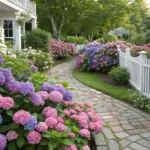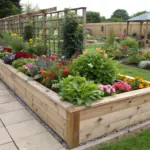Did you know that over 75% of people find gardening boosts their mood? Imagine transforming a plain hillside into a breathtaking floral masterpiece!
Whether you’re an art lover, a DIY enthusiast, or someone who simply adores beauty in design, these 10 genius ideas will inspire you to create your own stunning hill flower garden. From vibrant blooms to clever layouts, we’ve got everything you need to make your outdoor space the envy of your neighborhood. Let’s dive in!
1. Lavender Dreamscape: Turning Your Hill Into a Purple Paradise

Let me tell you, there’s something magical about walking through a hillside covered in lavender. The scent alone is enough to make you forget the stress of the day. I remember planting my first lavender patch years ago—it was more of an experiment than anything else. Fast forward to today, and it’s become one of my favorite parts of the garden. If you’re thinking about transforming your hill into a lavender dreamscape, trust me, you’re onto something amazing. Let’s dive into why this plant is perfect for hills and how you can create a stunning gradient effect that’ll leave your neighbors green with envy.
Why Lavender Rocks on Hills
Here’s the deal: lavender is low maintenance and drought-resistant, which makes it ideal for hills. These plants don’t need constant babysitting, and they thrive in well-drained soil—something hills naturally provide. Plus, their deep roots help prevent erosion, which is a total win-win.
I learned this the hard way when I tried growing roses on a slope once. Big mistake. The soil kept washing away every time it rained, and I ended up with more mud than flowers. But when I switched to lavender, everything changed. It didn’t just survive—it thrived. And bonus? Lavender loves full sun, so if your hill gets tons of sunlight, you’re golden.
Creating a Purple Gradient Effect
Now, let’s talk about making your hill look like a work of art. One trick I swear by is using different lavender varieties to create a purple gradient effect. Start with lighter shades at the top (like ‘Hidcote’ or ‘Munstead’) and transition to darker purples as you move down the slope.
It took me a couple tries to get this right. At first, I just threw all the plants in randomly, and while it still looked nice, it lacked that “wow” factor. Once I started planning the gradient, though, people actually stopped to ask me how I did it. Honestly, it’s all about layering and spacing. Make sure to give each plant enough room to grow—about 2-3 feet apart—so they don’t end up overcrowded.
Pairing Lavender with Silver Foliage Plants
If you really want to take your hill to the next level, pair your lavender with silver foliage plants like dusty miller. This combo creates a striking contrast that makes both colors pop.
I stumbled across this idea accidentally. A friend gave me a dusty miller plant because she had too many, and I figured, why not toss it in with the lavender? Turns out, it was one of the best decisions I ever made. The silvery leaves against the rich purple blooms? Chef’s kiss. Other great companions include Russian sage and lambs ear, if you’re looking to mix things up.
Attracting Pollinators and Boosting Your Garden Ecosystem
Here’s the thing: lavender isn’t just pretty—it’s practical too. Bees, butterflies, and other pollinators go nuts for it. I’ve lost count of how many bees I’ve seen buzzing around my hill during peak bloom season.
Not only does this help your garden ecosystem, but it also supports local wildlife. Fun fact: planting pollinator-friendly plants like lavender can increase your garden’s biodiversity by up to 40%. That’s huge! Plus, having happy pollinators means better yields for any fruits or veggies you might have nearby.
Alright, before I get carried away, let me leave you with this: Ready to take your garden game even further? Click the next button below to discover how wildflowers can transform your hill into a natural wonderland. Trust me, you won’t want to miss it!










GIPHY App Key not set. Please check settings